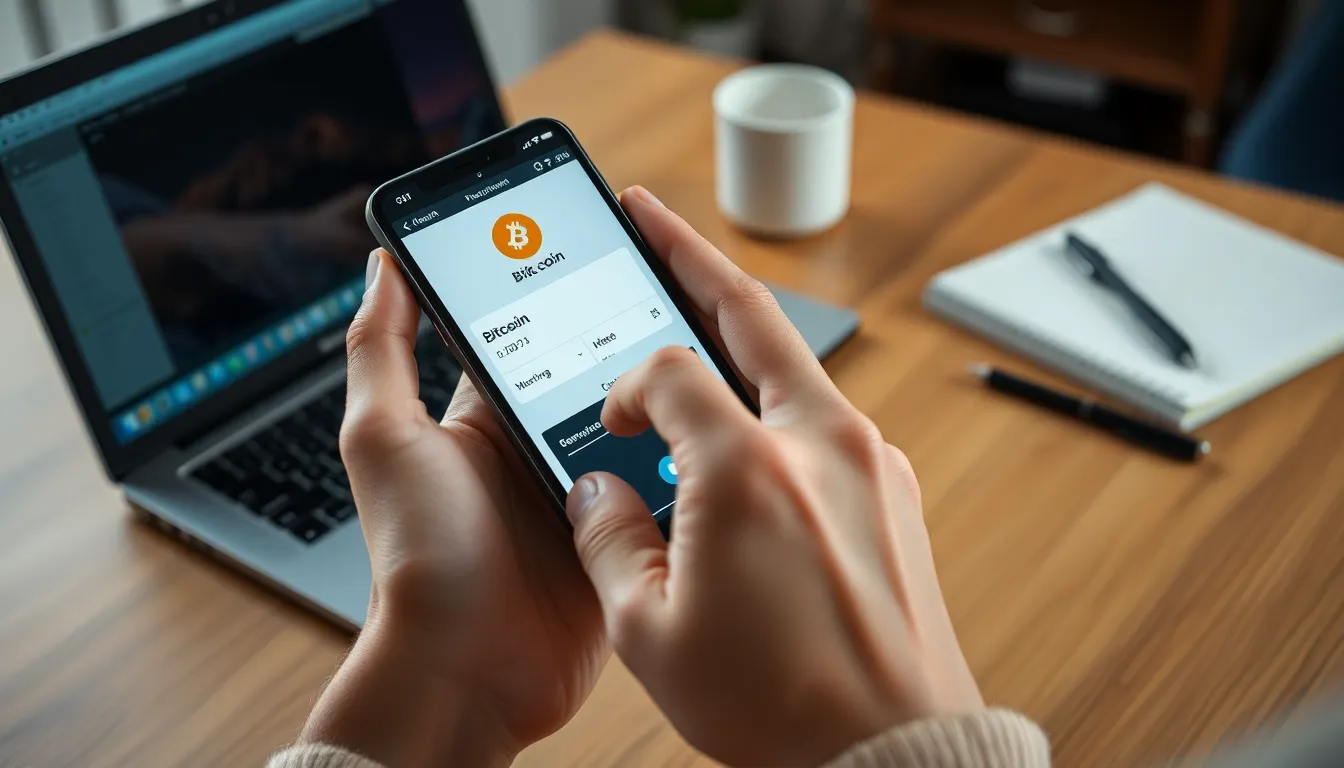In a world where digital currency reigns supreme, sending Bitcoin is as easy as tossing a virtual coin. Imagine being able to transfer value across the globe in mere minutes without the pesky interference of banks. Sounds like magic, right? Well, it’s just the wonders of blockchain technology at work.
How to Send Bitcoin to Another Wallet
Understanding how Bitcoin transfers work is crucial in utilizing this digital currency effectively. Transactions occur on a decentralized network known as blockchain, which eliminates intermediaries, allowing for direct wallet-to-wallet transfers.
What is a Bitcoin Wallet?
A Bitcoin wallet stores private and public keys used for transactions. It functions like a digital bank account, allowing users to receive, store, and send Bitcoin securely. Wallets don’t store Bitcoin directly; instead, they enable access to the blockchain where Bitcoin balances are recorded. Furthermore, security plays a vital role in Bitcoin wallets’ effectiveness. Users must protect their private keys from unauthorized access to prevent theft or loss of funds.
Types of Bitcoin Wallets
Various Bitcoin wallet types cater to different user needs. Software wallets, including desktop and mobile options, offer convenience for everyday transactions. Hardware wallets provide enhanced security by storing keys offline. Paper wallets allow users to print their keys physically, ensuring maximum security. Finally, web wallets enable access via browsers, although they pose higher risks due to potential security vulnerabilities. Each type serves a specific purpose, helping users manage their Bitcoin effectively.
Preparing to Send Bitcoin

Sending Bitcoin requires careful preparation. Users must ensure they take necessary steps to facilitate a secure transaction.
Choosing the Right Wallet
Selecting the appropriate wallet is crucial for safely sending Bitcoin. Software wallets offer everyday convenience, while hardware wallets provide superior security for holding significant amounts. Each type has unique advantages. Paper wallets serve as a purely offline option, offering maximum security against online threats. Web wallets provide accessibility through browsers but often carry increased risks. Users should assess their needs and comfort levels with technology to make an informed choice about their wallet.
Getting the Recipient’s Wallet Address
Ensuring the recipient’s wallet address is correct prevents transaction mishaps. Wallet addresses typically consist of a long string of alphanumeric characters. Users should copy the address directly from the recipient’s wallet to avoid errors caused by manual entry. Verification of the address before sending adds an extra layer of security. Sending a small test transaction first can also confirm the address’s accuracy. Taking these precautions minimizes the possibility of loss during the transfer process.
Step-by-Step Guide to Sending Bitcoin
Sending Bitcoin requires a few simple steps, ensuring a smooth transaction process. The following sections break down each step for clarity.
Accessing Your Wallet
First, users must access their Bitcoin wallet. This may involve launching a software application or connecting a hardware wallet to a device. Enter the wallet’s password or PIN for security. Familiar interfaces can ease the process, allowing for quick navigation. Each wallet type might have a unique layout, so users often browse through the menu to find the “Send” option.
Initiating the Transfer
Next, users initiate the transfer process. They input the recipient’s Bitcoin wallet address in the designated field. Copying and pasting the address minimizes errors. Selecting the amount of Bitcoin to transfer follows, providing clarity on how much value is sent. Transaction fees should also be reviewed, as they can vary based on the wallet and network congestion. Users confirm the details before proceeding to the next step.
Confirming Transaction Details
Finally, users confirm all transaction details before sending. A thorough review prevents mistakes, as errors can lead to lost funds. Wallets typically display a summary of the transaction, including recipient address, amount, and fees. If everything appears correct, users can proceed by clicking “Send.” Some wallets may request additional confirmation, such as a two-factor authentication code, to enhance security.
Tips for Safe Bitcoin Transactions
Ensuring safety while sending Bitcoin involves a few crucial steps. Paying attention to details can significantly reduce risks.
Double-Checking Wallet Addresses
Start by verifying the recipient’s wallet address. Users should copy and paste the address, then confirm its accuracy. Mistyping a letter can result in sending funds to the wrong wallet. Always cross-check with the sender to avoid mistakes. Using QR codes for scanning can minimize human error. Sending a small test transaction first provides extra assurance. This practice helps confirm that funds reach the intended recipient.
Understanding Transaction Fees
Transaction fees play a vital role in Bitcoin transfers. Fees vary based on network congestion and the speed of processing desired. Users can check current fee estimates within their wallets. Selecting a higher fee often results in faster confirmations. Conversely, lowering fees may delay transaction processing. Understanding these dynamics helps users make informed decisions. Proper management of fees can optimize the total cost of sending Bitcoin efficiently.
Conclusion
Mastering the process of sending Bitcoin to another wallet is crucial for anyone looking to navigate the world of digital currency. By understanding the different wallet types and their unique features users can make informed choices that align with their needs.
Taking the time to verify wallet addresses and transaction details ensures a smooth transfer while minimizing the risk of loss. As the landscape of cryptocurrency continues to evolve staying informed about transaction fees and security measures will enhance the overall experience.
With these practices in mind users can confidently engage in Bitcoin transactions and embrace the benefits of this innovative financial technology.















